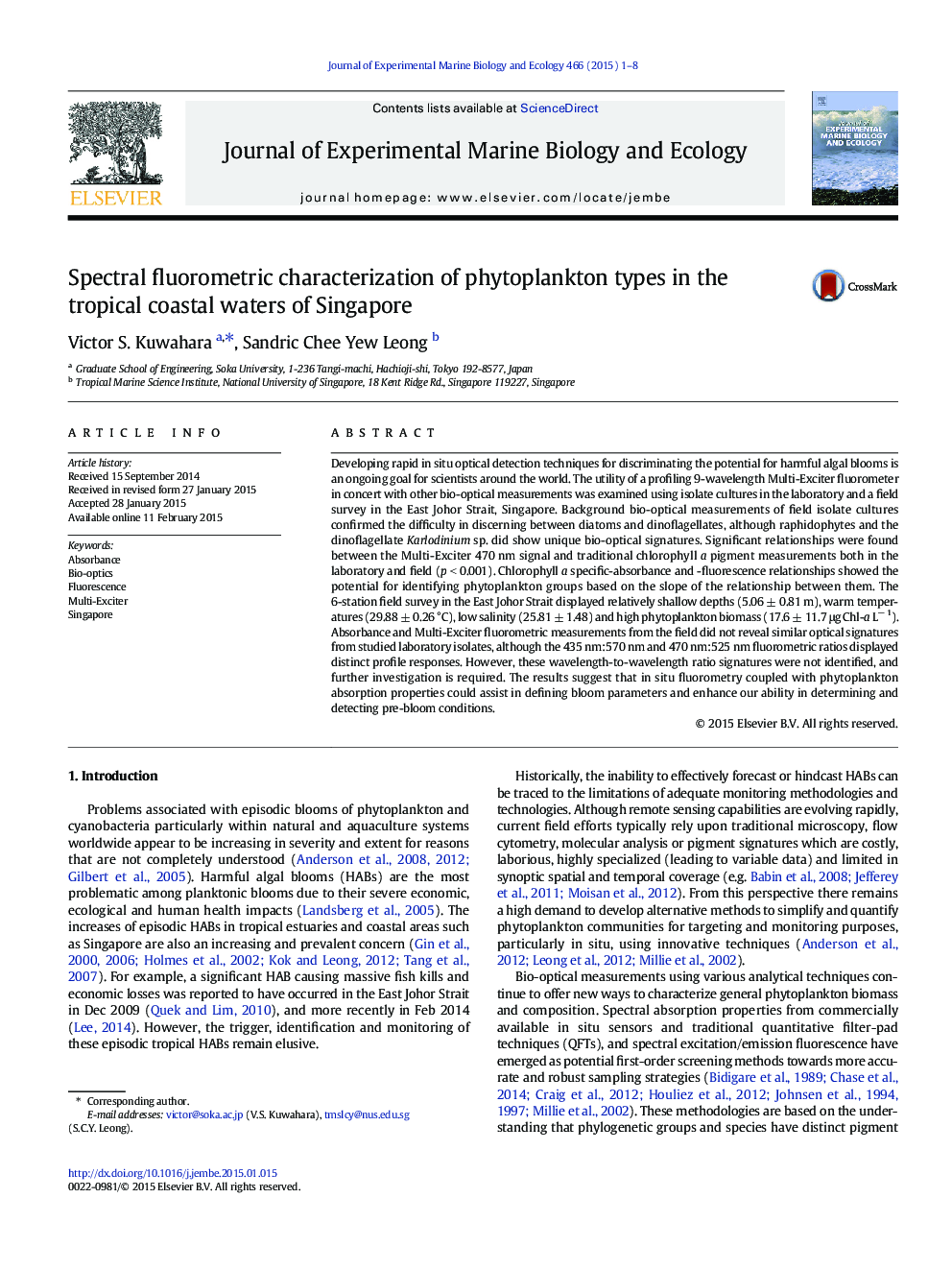| Article ID | Journal | Published Year | Pages | File Type |
|---|---|---|---|---|
| 4395464 | Journal of Experimental Marine Biology and Ecology | 2015 | 8 Pages |
•Evaluation of a commercially available Multi-Exciter fluorometer was conducted.•The Multi-Exciter distinguished photo-physiological attributes of phytoplankton.•Absorbance coupled with fluorometry shows promise in distinguishing phytoplankton.
Developing rapid in situ optical detection techniques for discriminating the potential for harmful algal blooms is an ongoing goal for scientists around the world. The utility of a profiling 9-wavelength Multi-Exciter fluorometer in concert with other bio-optical measurements was examined using isolate cultures in the laboratory and a field survey in the East Johor Strait, Singapore. Background bio-optical measurements of field isolate cultures confirmed the difficulty in discerning between diatoms and dinoflagellates, although raphidophytes and the dinoflagellate Karlodinium sp. did show unique bio-optical signatures. Significant relationships were found between the Multi-Exciter 470 nm signal and traditional chlorophyll a pigment measurements both in the laboratory and field (p < 0.001). Chlorophyll a specific-absorbance and -fluorescence relationships showed the potential for identifying phytoplankton groups based on the slope of the relationship between them. The 6-station field survey in the East Johor Strait displayed relatively shallow depths (5.06 ± 0.81 m), warm temperatures (29.88 ± 0.26 °C), low salinity (25.81 ± 1.48) and high phytoplankton biomass (17.6 ± 11.7 μg Chl-a L− 1). Absorbance and Multi-Exciter fluorometric measurements from the field did not reveal similar optical signatures from studied laboratory isolates, although the 435 nm:570 nm and 470 nm:525 nm fluorometric ratios displayed distinct profile responses. However, these wavelength-to-wavelength ratio signatures were not identified, and further investigation is required. The results suggest that in situ fluorometry coupled with phytoplankton absorption properties could assist in defining bloom parameters and enhance our ability in determining and detecting pre-bloom conditions.
